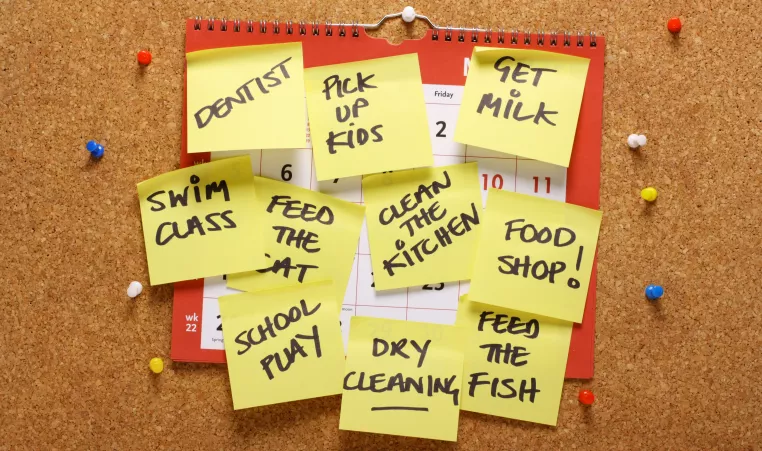Protect your Mental Health During Back-to-School Season

Back to school. Back to sports. Back to lessons, activities, appointments and calendar overload. If you are feeling the back-to-school rush, know that you are not alone.
It's normal to feel overwhelmed as you transition into a new season and a new schedule. Check out our tips for protecting your sanity as your family heads into the fall.
- Limit the Number of Activities
The number of fall activities are endless - school clubs, sports leagues, scout programs, music lessons, your favorite YMCA programs and so much more! There are plenty of opportunities to participate, but you should be realistic about how many activities your family can handle. Try setting a limit of one to three activities per child.
Worried that your child will miss out on opportunities if you set limits? Look for programs that are session-based and allow your children to select different programs throughout the school year vs. committing to programs that last all year long. That way, your child can still participate in a variety of activities throughout the year while also limiting the number of activities happening simultaneously.
- Learn to Say No
In addition to fall activities, you'll be receiving invitations for back-to-school nights, high school football games, family get-togethers, dinner with your neighbors, and more. Learning how and when to decline invitations is important for protecting your mental health.
Afraid of missing out? Think of what your brain is missing out on when you overcommit to events and activities. You need downtime to decompress and relax. Plus, your friends will still be your friends even if you miss the next neighborhood get-together.
- Establish Screentime Boundaries
As your calendar fills up, so does your inbox and newsfeed. Being constantly connected makes it challenging to get a break. It is important that you establish screentime boundaries to give your brain (and family) the break it deserves.
Boundaries may look different for each family, so be sure to find what works best for you. You may choose to set a nightly cutoff time - no screens after 7PM. Or perhaps you prefer to have a day of the week to disconnect from the virtual world - Screen-Free Sunday.
Whatever boundary you establish, be sure to communicate with your family about the boundaries - and expect a period of transition to the new schedule.
- Set Aside 15 Minutes per Day
Making a transition often sounds overwhelming but protecting your own mental health can start with small steps. Try establishing 15 minutes for yourself each day. This could be the first thing you do each morning, the last thing you do each night or something you do at Noon each day.
Find the time that works for you and that you can stick with over the long term.
- Embrace Quiet and Downtime
As you set limits and prioritize time for yourself or for family connection, you will start to experience more quiet moments and downtime. You may need to retrain your brain to enjoy these quiet moments.
Try reading, playing a family game, connecting with nature or meditating.
As with any journey, the mental health journey is a long road. Start by taking small steps so that you can continue to stay on the path over time.
Category:
Mental Health
Healthy Living